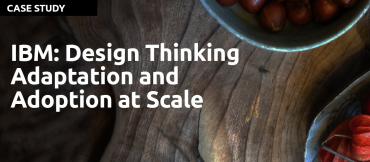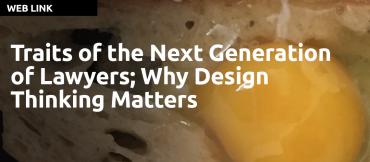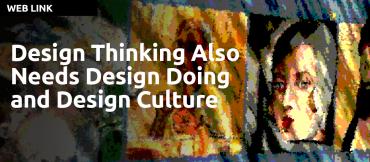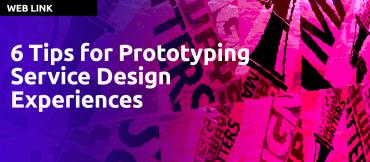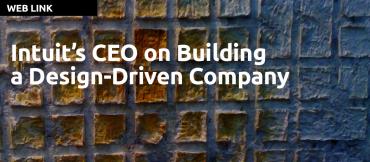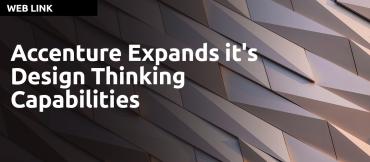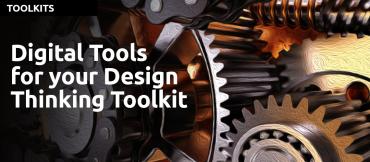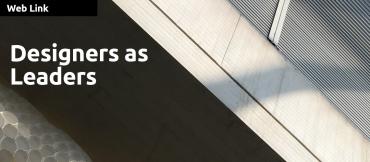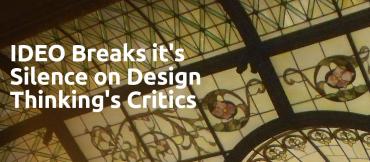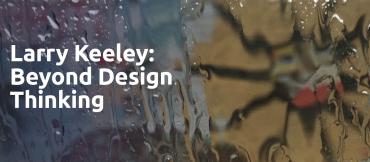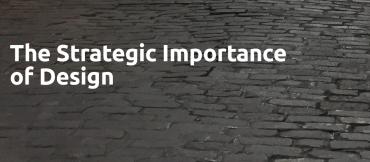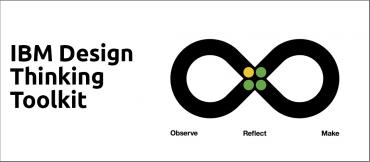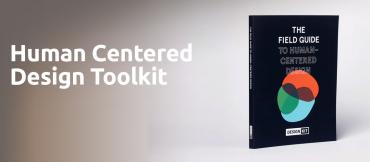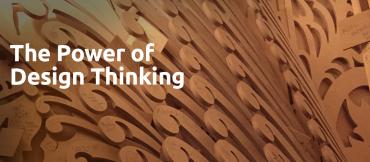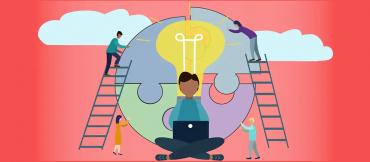
Design Thinking is widely used in the services industry by companies such as UPS, Airb&b, IBM, Uber and Intuit.
Read case studies and thought leadership articles about services on this page.
You should also refer to the Service Design Network (SDN) for more information.
How IBM made sense of ‘generic design thinking’ for tens of thousands of people.
Generic design thinking often faces heavy resistance from influential skeptics, gets misunderstood or not understood at all, or less dire, it gets picked up with an unreflected euphoria and is applied as a “silver bullet” to all kinds of problems and projects (the famous “methodology misfit” we also see with Scrum for example). The big hangover often comes after the first experimentation budgets are expended and at worst a blame game starts.
Let’s be honest, a lot of people don’t trust lawyers. A lot.
Some believe this is because lawyers speak and write in ways that are calculated and self-serving. But the world is changing and lawyers need new skills to adapt to the current consumer-driven market. This perceived lack of trust between lawyers and clients could be reduced through empathy.
Mark Curtis is the co-founder of Fjord, a design and innovation consultancy that was acquired by Accenture in May 2013. Curtis and Fjord operate under the rule of three for design, which incorporates design thinking, design doing and design culture, which he explained at Inspirefest 2016.
Service design includes all the intangible aspects of how an organization seeks to build a relationship over time with its customers. And one goal of prototyping these service design experiences is to bring tangibility to these intangible experiences. Prototyping is such a powerful tool because you're organizing your service around the needs of the end consumer. Prototyping is important for determining what lands correctly and what’s missing. It’s a way to depict how the experience might play out over time and to gather feedback around that.
The original version of Quicken offered only one-third the features that many competing products had, but with an important difference: It was well designed. Instead of looking like a spreadsheet, it displayed the familiar images of a check register and an individual check.
Because the design made using the product so intuitive, Quicken immediately became the market leader in personal finance software.
The Emotion Archive comprises 800 comments from people about health, family, finances, work, and more. Comments were gathered over the course of several weeks during April and May of 2020. Some great visualizations to help your insights during these changing times.
Every day, what we knew as normal before coronavirus fades away, and we find ourselves in a transitional space where we cope with the crisis day by day and wonder what we’ll be doing whenever the next normal arrives.
Accenture (NYSE: ACN) has entered into an agreement to acquire INSITUM, a service design and strategic research firm focused on innovation through a human-centered approach. The acquisition will strengthen Accenture Interactive’s position as a leading Experience Agency in the region by expanding the world-class services of its design and innovation unit, Fjord, in Latin America and beyond.
This is a great article by SessionLab reviewing some of the Digitally available tools to help you organize and enable your Design Thinking projects. They do a good job of demonstrating how each tool helps and what stage of the project they are most useful for. Adding some or all of these tools would greatly increase the effectiveness of your Design Thinking Toolkit.
Now that we have a seat at the table, how do we prove we belong?
This is a great article from Douglas Powell, VP of Design at IBM. In this article you will understand a lot more about how designers think as the profession continues to demonstrate its value to business and especially business leadership.
IDEO is a leading design and innovation consultancy that is widely recognized for its expertise in design thinking. According to IDEO, design thinking is a human-centered approach to problem-solving that emphasizes empathy, experimentation, and iteration. The goal of design thinking is to create innovative and effective solutions to complex problems by understanding the needs of the user or customer. IDEO believes that design thinking is a powerful tool for businesses and organizations that want to create meaningful and sustainable change.
Voltage Control focus on better ways to work together by using Human Centered Design and Design Thinking techniques to explore how we can improve virtual meets that have been forced upon us by the stay at home/social distancing policies around the world. They look at the needs of participants and think through how to create some of the interaction that happens in physical meetings in a number of articles
The key to Design Thinking is it begins by imagining a solution that does not exist yet, and then sets about outlining a pathway to realizing it. Normally we make an assessment of a problem and seek to correct it. Design Thinking is only a part of Keeley's 10 types of Innovation model.
Most Management Consultancies have bought Design Firms in the past few years as they realize the importance of Design in creating customer value. Accenture bought Fjord about 7 years ago. This case study covers how Fjord and Accenture operate and the impact of the two on each other.
Fjord is an international design and innovation consultancy which was acquired by Accenture Interactive in 2013. It has a structured design process and is increasingly working at a senior level within clients’ organizations, applying design thinking to strategic business challenges.
The examples of Design Thinking below demonstrate that it is a mindset and a methodology for problem solving that typically has 5-6 (cyclical) process steps that are easy to follow and can be implemented by anyone trying to solve a problem. Anyone, or any group of people can produce many good ideas using the Design Thinking process. The steps are designed to encourage the formation of new ideas focused around the users needs. As with any process, i.e. running, participants must develop and practice the skills required to produce excellence while using the process.
Often the first questions that come up when an idea is put on the table for consideration during the development of a project are "how long will it take to develop?" and "how much will it cost?"
However, the most important question to ask first is: “What value can I create for my users?”
To Uber Eats Design Thinking has been a powerful tool to create higher customer satisfaction. Creating the future of food delivery takes empathy, innovation, and an appetite for complex logistical challenges. Using Design Thinking, UberEATS is on a mission to make eating well effortless for everyone, everywhere. The UberEats service connects customers to Uber-speed delivery from restaurants in over 80 cities around the world. UberEats give people more options when choosing how to eat.
Mirko Azis speaks to the basics of IBM Design Thinking in this 10 minute video. The Key’s to IBM Design Thinking. Mirko presents the process in clear examples that will give you a good understanding of how IBM have customized the Design Thinking process.
IBM offers a comprehensive set of tools such as their IBM Design Thinking Toolkit to help you structure your creative problem solving work sessions better. Some of the tools are free, but the full set has to be paid for. IBM has been working successfully on developing Design Thinking tools for practical problem solving applications for many years. They also have a very informative research report available to the public on the outcomes and ROI of Design by Forrester Research.
In 2009, IDEO designed and launched the IDEO Human Centered Design (HCD )Toolkit, a first-of-its-kind book that laid out how and why human-centered design can impact the social sector.
Infusing your organization with a design-driven culture that puts the customer first may provide not only real, measurable results but also a distinct competitive advantage.
Experience design is all about meeting customers where they want to be and creating products that improve the process of getting there.
Jennifer Kilian and Hugo Sarrazin talk about McKinsey's work in this podcast and transcript.
Big Blue is not your typical Silicone Valley start-up. It's 108 years old and found that when they applied the Stanford d.school Design Thinking methodology to their own processes that it did not work quite the way the theory said it should. This great article by Jan Schmiedgen and Ingo Rauth, explains how IBM evolved their version of the Design Thinking process.
From a Failing Startup to a Billion Dollar Business
In 2009, Airbnb was close to going bust. Like so many startups, they had launched but barely anyone noticed. The company’s revenue was flatlined at $200 per week.
Split between three young founders living in San Francisco, this meant near indefinite losses on zero growth.

